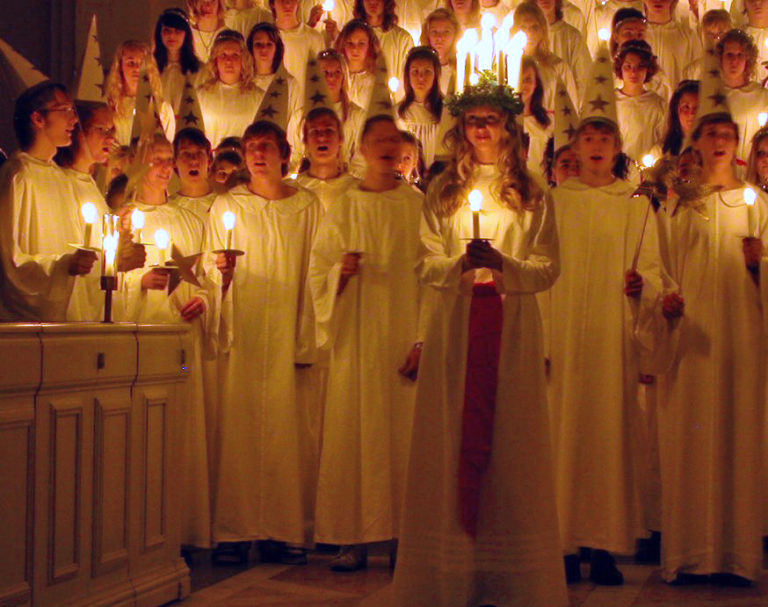Today at December 13 Lucia is celebrated in Sweden (“Saint Lucy’s Day” in English). All over Scandinavia this date is associated with the longest night of the year (and consequencely the shortest day), since it’s coinciding with Winter Solstice. It is said that to vividly celebrate Saint Lucy’s Day will help one live the long winter days with enough light.
The fact is that in the 1800’s it was only men that appeared as Lucia. The Swedish Lucia tradition was first started among the Swedish universities where female students wheren’t allowed at that time. Nowadays there are some controversy over males as Lucia (amongst narrowminded people).
The modern tradition of having public processions in the Swedish cities really took off in 1927 when a newspaper in Stockholm elected an official Lucia for Stockholm that year. The initiative was then followed around the country through the local press. Today most cities in Sweden appoint a Lucia every year. Schools elect a Lucia and her maids among the students and a national Lucia is elected on national television from regional winners. The regional Lucias will visit shopping malls, old people’s homes and churches, singing and handing out gingernut cookies (pepparkakor). Guinness World Records has noted the Lucia procession in Ericsson Globe in Stockholm as the largest in the world, with 1200 participants from Adolf Fredrik’s Music School, Stockholms Musikgymnasium and Stockholms läns Blåsarsymfoniker.
Lucia is a major feast day in Scandinavia, Sankta Lucia is represented as a lady in a white dress (a symbol of a Christian’s white baptismal robe) and red sash (symbolizing the blood of her martyrdom) with a crown or wreath of candles on her head. In Norway, Sweden and Swedish-speaking regions of Finland, as songs are sung, girls dressed as Saint Lucy carry cookies and saffron buns in procession, which “symbolizes bringing the light of Christianity throughout world darkness”. Nowadays Sweden are a rather secular society and for most people it doesn’t hold a religious significance but are rather a light festival where we celebrate the light in the darkness, since it is the darkest time of the year and we are waiting for the (day)light to return to our northerly regions.
Devotion to Saint Lucy is also practiced in the Italian regions of Lombardy, Emilia-Romagna, Veneto, Friuli Venezia Giulia, Trentino-Alto Adige, in the north of the country, and Sicily, in the south, as well as in the Croatian coastal region of Dalmatia.


